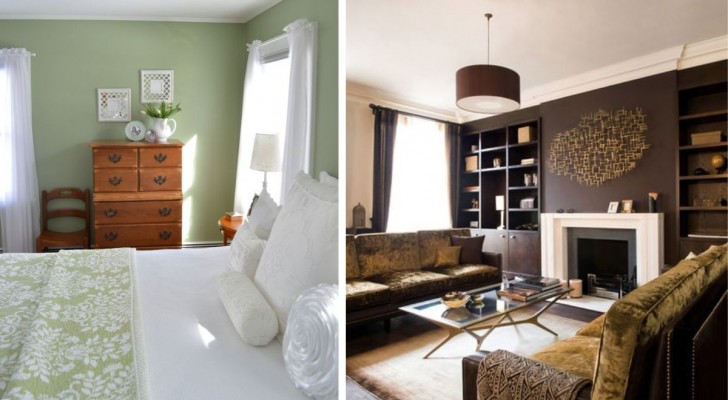The best colors for painting the walls in your home in rooms with low natural lighting

When you choose to paint the walls in your house, your favorite color might not look so good once its been applied (and dried). Internal and external lighting, the positioning of doors and windows, the color of furnishings - all these variables determine how well (or not) a chosen painting scheme turns out in the end.
So what's the best way to chose the color of paint for your walls? Consider the lighting of in the room as well as its intended use and let yourself be guided in your choice by these features. Colors that reflect more light will be the most suitable for creating the feeling of space, for example.
Below, we provide a short guide on the factors to consider when choosing paints for the home:
Why do colors change on application?

There are several reasons why applied paint seems to change color:
- Positioning: take into account the position of the wall you are going to paint. A color can make the room feel larger and more spacious, or smaller and more cozy. What effect do you want to achieve with your paint?
- Underlying color: if the original color of your walls is not white, you will first need to cover the entire surface with a coat of white primer. The underlying paint color can "bleed through" a covering paint, changing its shade.
- Lucidty (shine/sheen): the finish of your paint will also cause changes to the final color of the wall; matte finishes will tend not to change too much; gloss finishes will give more variable results.
- Porous surface: a porous surface will tend to darken colors and cause light paints to streak. To overcome this problem, use a good primer.
- Adjacent colors: when choosing different colors, choose shades that are close to each other on the color wheel to avoid jarring contrasts.
- Undertone: a final element to take into account is the undertone, a characteristic element of each paint that can be highlighted by the furnishings and decorations in the painted location.
Taking all these factors into account, you can now proceed to choose the color paint most suitable for you.
Light, neutral colors for rooms with little light
In general, all light/neutral colors are suitable for brightening up rooms and adding warmth, and combine well with other brighter shades.
- White is the illuminating color par excellence and makes your rooms feel large, bright and elegant.
- Cream is a warmer and more welcoming shade of white, which will add a softer shade to your rooms.
- Gray in all its shades creates soft and open spaces and can easily combine with other colors, giving your rooms a minimalist look.
- Beige is a very versatile color, suitable for all rooms and can also be combined with other shades.
Light colors are also a perfect choice for rooms with little light, because they will immediately make the room feel more airy and spacious.
- Yellow: its warm and welcoming shade will allow you to add energy to the environment, particularly suitable for for kitchens and dining rooms.
- Powder pink: another warm shade with a calming effect, pink creates positive vibes and offers excellent results when used in the bedroom and home office.
- Light blue: the different shades of blue are perfect for opening up spaces and feeling relaxed. Perfect for bathrooms and bedrooms, blues can make your living room warmer and more welcoming and is great when combined with beige.
- Sage green: perfect in places where tranquility and harmony are needed, green is perfect for the bedroom and living room, but also in a corridor to expand the space.
- Lavender: associated with creativity and optimism, lavender will allow you to open up spaces while giving you a feeling of serenity.
Dark colors for rooms with little light
If you prefer to dark colors, you can combine these with lighter shades to obtain a visual enlargement effect on the walls and surrounds. Widely used to paint just one wall (aka an accent wall) while leaving the others white/light, dark colors will create a contrast that will brighten the room.
- Black: black is perfect for adding elegance and sophistication to a room (but don't overdo it).
- Dark red: is perfect for living rooms and dining rooms, especially when combined with earthy or cream colors.
- Dark blue: with a calming effect and capable of encouraging reflection, dark blue will be perfect in the bedroom, bathroom and office.
- Plum: Created from a blend of red and purple, plum adds depth and gives the room a sophisticated look and is therefore suitable for dining rooms and bedrooms, which will have a more elegant and traditional look.
Do you prefer light or dark paint colors for your walls?